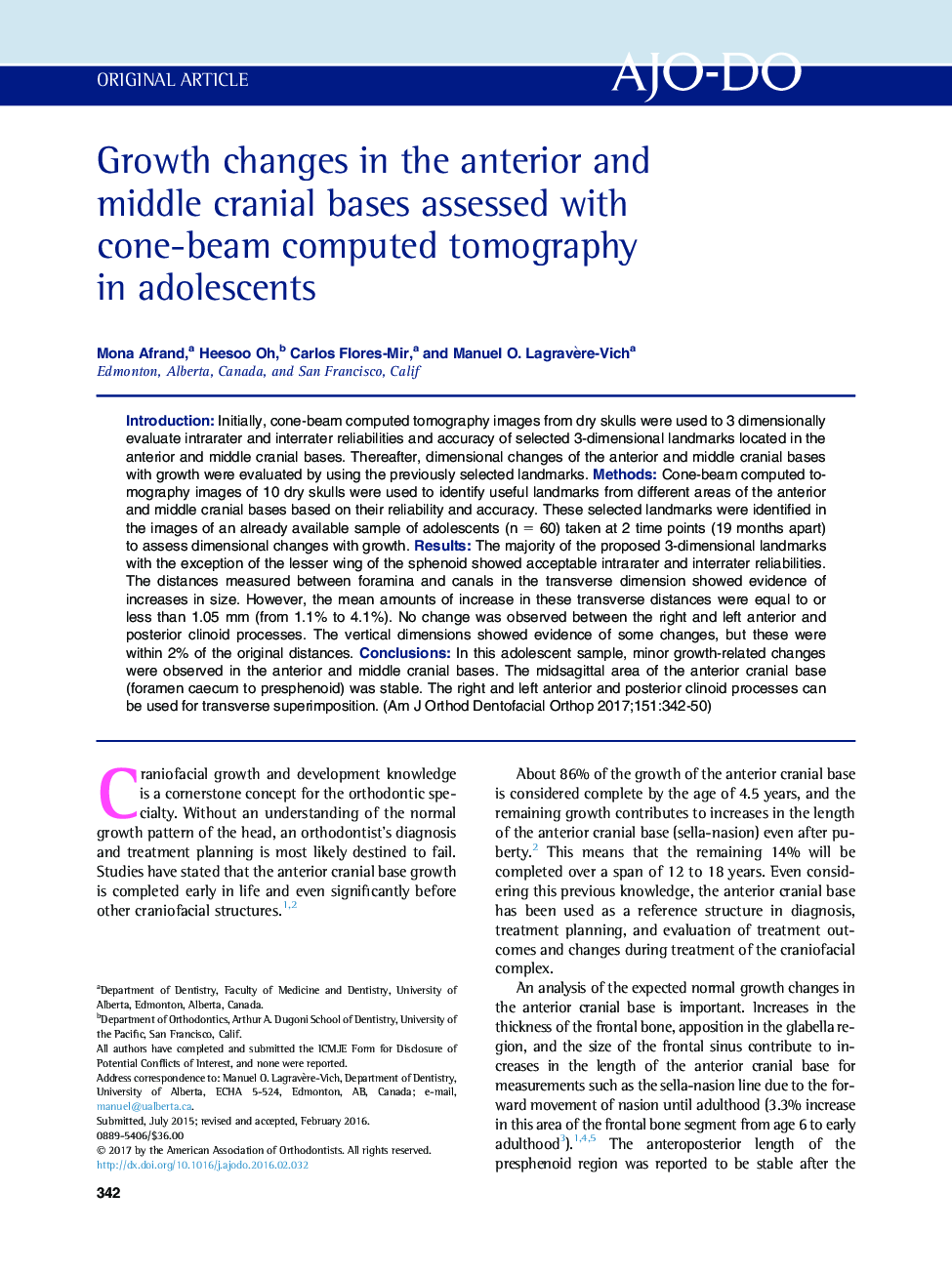| Article ID | Journal | Published Year | Pages | File Type |
|---|---|---|---|---|
| 5637570 | American Journal of Orthodontics and Dentofacial Orthopedics | 2017 | 11 Pages |
â¢Anterior and middle cranial base growth has not been studied extensively in 3 dimensions in adolescents.â¢Landmarks in the anterior and middle cranial bases are accurate and reliable.â¢Minor growth changes were found in the anterior and middle cranial bases in adolescents.
IntroductionInitially, cone-beam computed tomography images from dry skulls were used to 3 dimensionally evaluate intrarater and interrater reliabilities and accuracy of selected 3-dimensional landmarks located in the anterior and middle cranial bases. Thereafter, dimensional changes of the anterior and middle cranial bases with growth were evaluated by using the previously selected landmarks.MethodsCone-beam computed tomography images of 10 dry skulls were used to identify useful landmarks from different areas of the anterior and middle cranial bases based on their reliability and accuracy. These selected landmarks were identified in the images of an already available sample of adolescents (n = 60) taken at 2 time points (19 months apart) to assess dimensional changes with growth.ResultsThe majority of the proposed 3-dimensional landmarks with the exception of the lesser wing of the sphenoid showed acceptable intrarater and interrater reliabilities. The distances measured between foramina and canals in the transverse dimension showed evidence of increases in size. However, the mean amounts of increase in these transverse distances were equal to or less than 1.05 mm (from 1.1% to 4.1%). No change was observed between the right and left anterior and posterior clinoid processes. The vertical dimensions showed evidence of some changes, but these were within 2% of the original distances.ConclusionsIn this adolescent sample, minor growth-related changes were observed in the anterior and middle cranial bases. The midsagittal area of the anterior cranial base (foramen caecum to presphenoid) was stable. The right and left anterior and posterior clinoid processes can be used for transverse superimposition.
